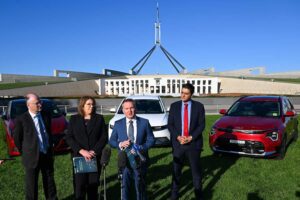The growth of rooftop solar PV in Western Australia has taken the market operator by surprise, but has resulted in a dramatic reduction in both the scale and the timing of peak demand in the state.
According to the latest statement of energy market opportunities for WA, the Australian Energy Market Operator says that rooftop solar PV – now on one in four homes and businesses in the state – reduced peak demand by 265MW, or 7.2 per cent in the last summer.
It says the uptake of rooftop solar in WA, which has been double expectations over the last two years – driven by falling costs of rooftop solar PV and the rise in grid prices – is “accelerating a paradigm shift” for the energy industry.
The biggest impact is on peak demand. The biggest peak in the state occurred on March 1, reaching 3,670MW in the 1700-1730 trading interval – the lowest since 2009.
This was helped by the contribution of rooftop solar (265MW in that peak interval), and from demand response (124MW), a technology that AEMO wants to deploy more in the eastern states for the same reason.
“The rapid adoption of rooftop solar is not only slowing annual operational consumption growth but also eroding the mid-day grid demand and shifting peak demand to later in the day,” said AEMO’s Executive General Manager – Western Australia, Cameron Parrotte.
“With the strong growth in rooftop solar installations anticipated, AEMO expects demand in the middle of the day to shrink further, resulting in a rapid increase in demand in the lead up to the evening peak once the sun sets.”
This “duck curve” – or as AEMO’s new CEO Audrey Zibelman now describes it, “emu curve” – will have a growing impact on market operations, with the difference between minimum and maximum demand doubling from 600MW to 1100MW in the last eight years.
Parrotte says this may result in issues for gas generation, and a lift in prices, but the report also notes the potential for a big uptake of battery storage over the next 10 years, which could help manage the peaks and the ramping in demand as solar PV winds down in the evening.
“Both large and small-scale storage can have positive effects on system security by providing a buffer to steep ramp rates that may be associated with high levels of renewable generation, and smooth out system peaks,” AEMO says in an earlier discussion document on renewable energy.
“This can reduce the need for gas-fired peaking and load following generation.”
AEMO says that over the past year, about 125MW of new rooftop solar PV was installed, representing an increase in total rooftop PV capacity in the SWIS of around 20 per cent.
This was way ahead of previous forecasts, made in 2015, which expected 564MW by June, 2017. By February, the total reached 671MW and is now more than 720MW.
The state now has around 230,000 rooftop solar systems, and the pace shows no sign of slowing, given the falling cost of solar and the rising price of grid power, which in WA is subsidised by around $550 million a year, or around 30 per cent of its actual cost.
AEMO expects rooftop solar to treble over the next 10 years, to more than 2,000MW in the high scenario, with battery storage likely to grow to more than 450MWh.
Those subsidies are likely to be wound back, resulting in a further increase in the uptake of rooftop solar PV, a factor that AEMO says is being accelerated by alternative business models such as solar leasing.









